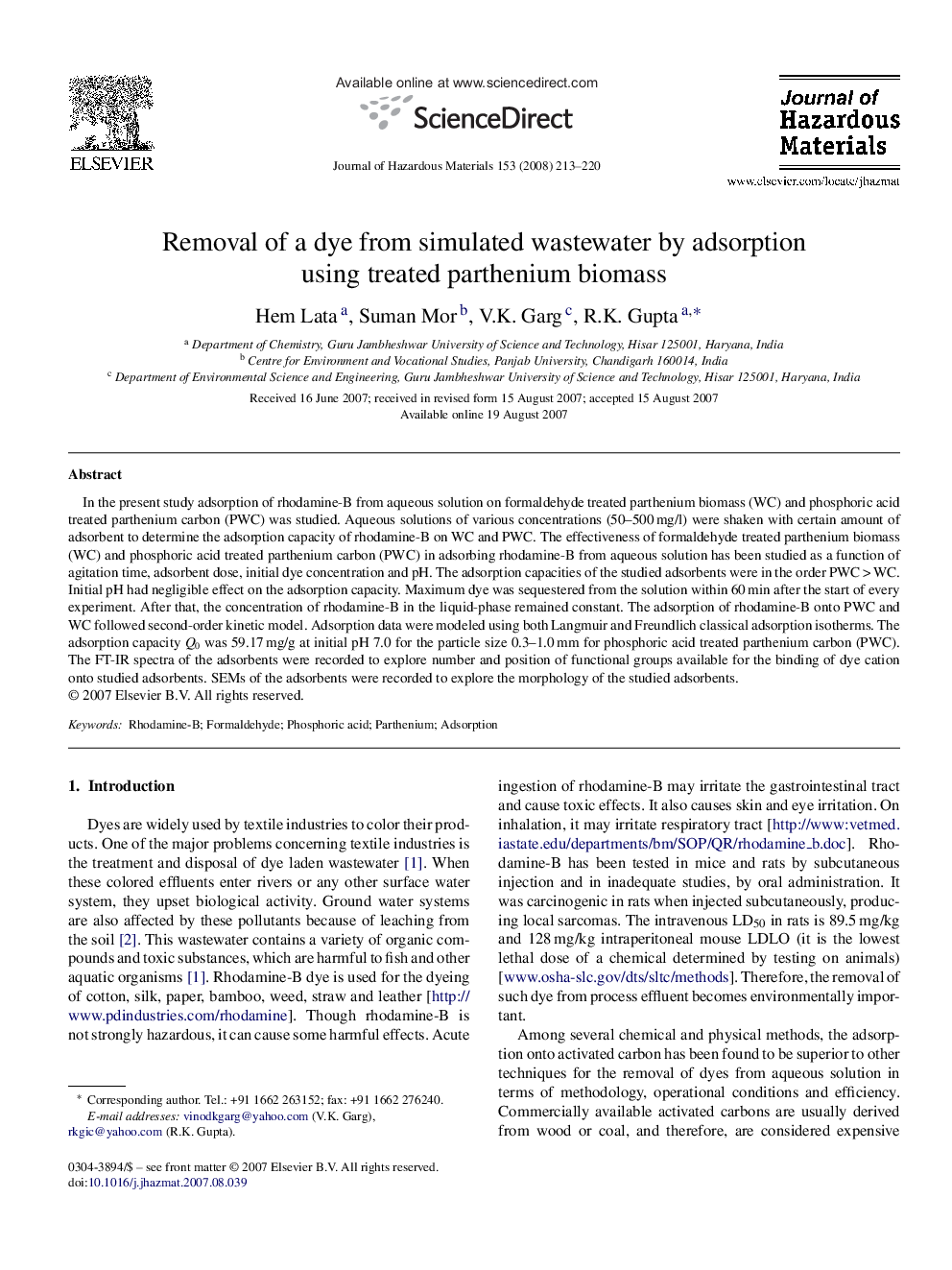| Article ID | Journal | Published Year | Pages | File Type |
|---|---|---|---|---|
| 583102 | Journal of Hazardous Materials | 2008 | 8 Pages |
Abstract
In the present study adsorption of rhodamine-B from aqueous solution on formaldehyde treated parthenium biomass (WC) and phosphoric acid treated parthenium carbon (PWC) was studied. Aqueous solutions of various concentrations (50-500Â mg/l) were shaken with certain amount of adsorbent to determine the adsorption capacity of rhodamine-B on WC and PWC. The effectiveness of formaldehyde treated parthenium biomass (WC) and phosphoric acid treated parthenium carbon (PWC) in adsorbing rhodamine-B from aqueous solution has been studied as a function of agitation time, adsorbent dose, initial dye concentration and pH. The adsorption capacities of the studied adsorbents were in the order PWCÂ >Â WC. Initial pH had negligible effect on the adsorption capacity. Maximum dye was sequestered from the solution within 60Â min after the start of every experiment. After that, the concentration of rhodamine-B in the liquid-phase remained constant. The adsorption of rhodamine-B onto PWC and WC followed second-order kinetic model. Adsorption data were modeled using both Langmuir and Freundlich classical adsorption isotherms. The adsorption capacity Q0 was 59.17Â mg/g at initial pH 7.0 for the particle size 0.3-1.0Â mm for phosphoric acid treated parthenium carbon (PWC). The FT-IR spectra of the adsorbents were recorded to explore number and position of functional groups available for the binding of dye cation onto studied adsorbents. SEMs of the adsorbents were recorded to explore the morphology of the studied adsorbents.
Related Topics
Physical Sciences and Engineering
Chemical Engineering
Chemical Health and Safety
Authors
Hem Lata, Suman Mor, V.K. Garg, R.K. Gupta,
